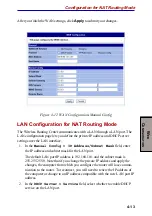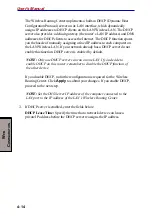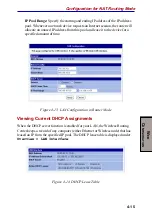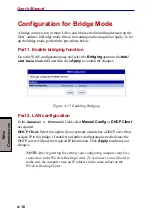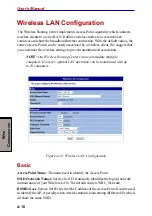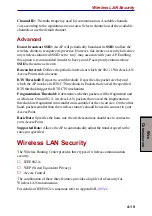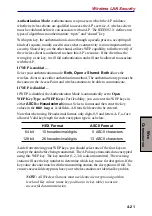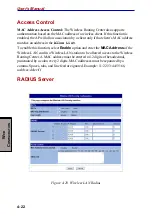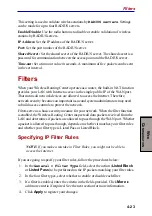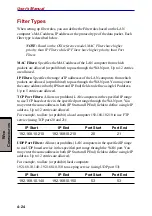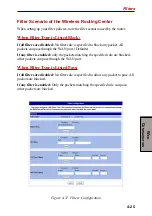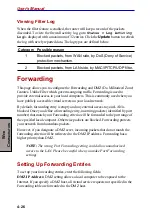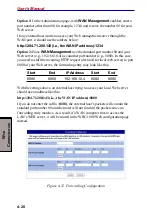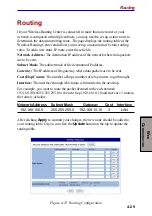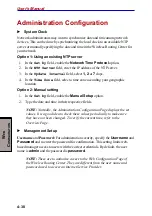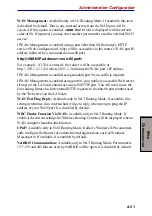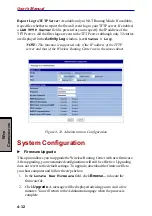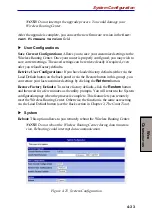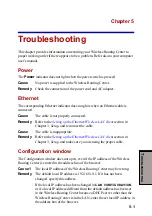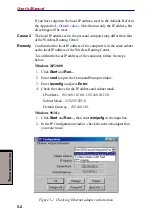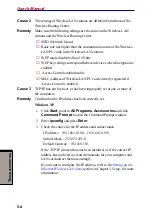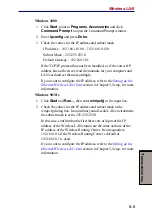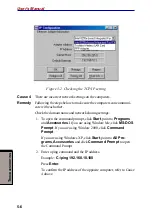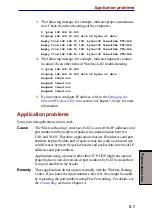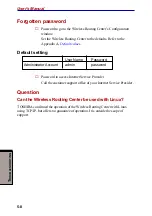
4-27
W
EB
C
ONFIGURATION
TCP Port Forwards: In the first
Start
and
End
fields, define the port range for
the incoming TCP service you want to forward. In the
IP Address
field, enter
the IP address of the virtual server to which packets are forwarded. The
Start/
End
fields on the right side define the port range for the TCP service on the virtual
server.
For example, the setting below allows access on virtual server 192.168.10.210
using FTP service.
Start
End
IP Address
Start
End
20
21
192.168.10.210
20
21
UDP Port Forwards: The configuration is the same as setting TCP Port Forwards,
only that the entry applies to UDP service.
When the router gets outside TCP/UDP requests destined for the WAN port, it
determines whether the services are allowed according to your forwarding settings.
For example, if you do not specify FTP virtual service in the Forwarding table,
incoming FTP requests (identified by port number in packets) are blocked or
otherwise sent to the DMZ host (if specified). On the other hand, if an FTP forward-
ing entry has been set up, the FTP requests will be forwarded to the specified
computer.
NOTE: If you set multiple forwarding entries, they will be used in order
from the first entry. In the example below, incoming FTP requests will be
sent to IP Address 192.168.10.220 not to 192.168.10.210.
Start
End
IP Address
Start
End
20
25
192.168.10.220
20
25
20
21
192.168.10.210
20
21
If you have a Web server on your network…
If you enable WAN Management (allow external access from the WAN port, see
the Administration Configuration section) and want to designate another Web
server on your local network, perform either of the procedures below to avoid port
conflicts:
Forwarding

